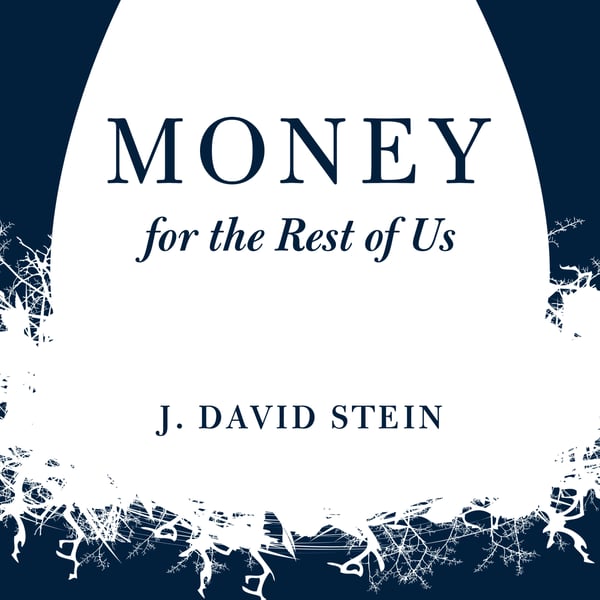Indexing Bubble and Asset Class Returns Still Revert to the Mean
Money For the Rest of Us
J. David Stein
4.3 • 1.3K Ratings
🗓️ 11 December 2024
⏱️ 34 minutes
🧾️ Download transcript
Summary
How asset class returns move in cycles with periods of above-average returns followed by periods of lower returns. How has the rise of passive indexing led to higher stock valuations, and what does that mean for markets?
Sponsors
NetSuite - Download the CFO’s Guide to AI and Machine Learning
LegalZoom - Use code David10 to 10% off
Insiders Guide Email Newsletter
Get our free Investors' Checklist when you sign up for the free Money for the Rest of Us email newsletter
Our Premium Products
Show Notes
The Equity Risk Premium: Nine Myths (JPM Series) by Rob Arnott—Research Affiliates
PASSIVE INVESTING AND THE RISE OF MEGA-FIRMS by Hao Jiang, Dimitri Vayanos, and Lu Zheng—NBER
Limits to Diversification: Passive Investing and Market Risk by Lily H. Fang, et al.—SSRN
Related Episodes
503: U.S. Stocks Have Never Been This Overhyped or Expensive
500: The S&P 500 Index and the Decade Ahead
468: Lessons from Japan’s 34 Years of Stock Market Underperformance
390: Are BlackRock and Vanguard Too Big and Powerful?
See Privacy Policy at https://art19.com/privacy and California Privacy Notice at https://art19.com/privacy#do-not-sell-my-info.
Transcript
Click on a timestamp to play from that location
| 0:00.0 | Welcome to Money for the rest of us. This is a personal finance show on money, how it works, |
| 0:06.1 | how to invest it, and how to live without worrying about it. I'm your host David Stein. Today is |
| 0:12.3 | episode 504. It's titled, Indexing Bubbles and Asset Class Returns still revert to the mean. |
| 0:20.4 | This is part three of what has turned out to be a three-part |
| 0:24.5 | series primarily on the U.S. stock market, which is at its most expensive level relative to non-U.S. |
| 0:34.3 | stocks of all time. We have looked at U.S. stocks back in episode 500, and last week in |
| 0:41.1 | episode 503, we've pointed out how the U.S. stock market makes up 66% of the global stock market, |
| 0:49.2 | even though the U.S.'s economic output or GDP is only 26% of the world's economic output. We've done |
| 0:57.8 | performance attribution where we've looked at the impact of valuation changes on U.S. stock |
| 1:04.6 | market outperformance, where four percentage points of the close to 13% annualized return for U.S. stocks over the past decade is because |
| 1:14.1 | stocks have gotten more expensive. We'll share a paper by Rob R. Not where he uses the phrase for |
| 1:21.9 | that called revaluation, performance that's driven by an asset class getting more expensive or less expensive. |
| 1:32.4 | We've looked at positive elements that contributed to a stock market outperformance, such as |
| 1:38.0 | U.S.'s deep and attractive financial markets, the nation's venture capital availability for |
| 1:44.1 | startups, the higher education |
| 1:46.0 | system that attracts top talent from around the world. We've looked at some macroeconomic factors |
| 1:53.5 | that have contributed to the outperformance, such as the growing U.S. federal budget deficit |
| 1:58.8 | with those elevated cash flows flowing into the economy, |
| 2:03.6 | boosting corporate profitability. We've also looked at the earnings overlap, how 40% of earnings |
| 2:10.6 | of stocks that comprise the S&P 500 index come from non-U.S. countries, whereas non-U.S. listed companies, those stocks overseas |
| 2:21.0 | get 20% of their earnings from the United States. We've looked at Goldman Sachs forecast that |
| 2:28.2 | U.S. stocks will return only 3% annualized over the next decade, with the range between negative 1% and 7%. |
... |
Please login to see the full transcript.
Disclaimer: The podcast and artwork embedded on this page are from J. David Stein, and are the property of its owner and not affiliated with or endorsed by Tapesearch.
Generated transcripts are the property of J. David Stein and are distributed freely under the Fair Use doctrine. Transcripts generated by Tapesearch are not guaranteed to be accurate.
Copyright © Tapesearch 2025.

